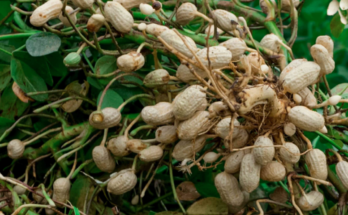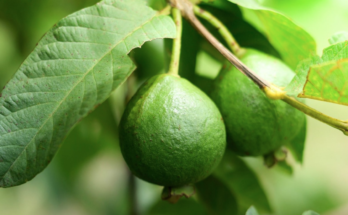Welcome back to my gardening oasis where I decode the secrets of cultivating cherries in Texas! Wondering, “Can you grow cherries in Texas?”
In the Lone Star State, cultivating cherries can be a challenge due to the warm climate. In this green haven of mine, I’ll guide you through the nuances of nurturing cherry trees in the Texan soil.
Join me in unraveling the art of cherry cultivation, as I share personal insights and expert hacks. From soil prep to the perfect pruning techniques, I’m here to make your Texan cherry-growing journey a fruitful success.
Let’s dive into the vibrant world of cherries beneath the Texas sun!
Can You Grow Cherries In Texas?
You can grow cherries in Texas! The key is choosing heat-tolerant varieties. I’ve found success with cultivars like Stella and Lapins.
Plant in well-draining soil, ensuring it’s slightly acidic. I recommend a sunny spot for at least 6 hours daily. Water consistently, especially during dry spells.
Mulching helps retain moisture. Pruning is crucial for shaping and maximizing fruit production. In my experience, cherries thrive with a balanced fertilizer.

While Texas poses challenges, with proper care and the right choices, you can enjoy the sweet taste of homegrown cherries!
15 Excellent Types Of Cherry Trees To Plant In Texas
1. Black Tartarian (Prunus avium ‘Black Tartarian’)
Renowned for its luscious, sweet cherries, the Black Tartarian cherry tree stands out in Texas gardens.
With a distinctive dark hue, these cherries are not only delicious but also well-suited to the warm Texan climate.
Ensure a sunny spot for optimal growth and watch as this variety flourishes, offering a delectable harvest.
2. Royal Lee (Prunus avium ‘Royal Lee’)
Tailor-made for smaller spaces, the Royal Lee cherry tree is a self-pollinating gem. This means you don’t need multiple trees for fruit production, making it an excellent choice for compact Texas landscapes.
Its adaptable nature and beautiful blossoms make it an attractive addition to any garden, providing both aesthetics and a bounty of cherries.
3.Lapins (Prunus avium ‘Lapins’)
If you’re seeking large, flavorful cherries that can thrive in the Texas climate, look no further than the Lapins cherry tree.
Known for its adaptability and resistance to diseases, this cultivar promises a robust harvest. Plant in well-draining soil, and with proper care, you’ll be enjoying the rich taste of Lapins cherries in your Texan garden.
4. Compact Stella (Prunus avium ‘Stella’)
Designed for smaller gardens, the Compact Stella cherry tree doesn’t compromise on yield. Its manageable size makes it an excellent choice for urban or limited spaces in Texas.
Expect a profusion of cherries with the same delightful taste as larger varieties. Give it a sunny spot, and Compact Stella will reward you with a compact yet abundant harvest.
5. Romeo and Juliet Cherry Trees
These charmingly named cherry varieties bring a touch of romance to Texan gardens. While the names evoke Shakespearean drama, these trees offer resilience and adaptability.
Romeo and Juliet cherry trees are well-suited for Texas climates, providing both visual appeal and the promise of sweet cherries.
6. Nanking Cherry
Beyond its fruit-bearing capabilities, the Nanking cherry tree serves a dual purpose as an ornamental addition to Texas landscapes.
Hardy and adaptable, this cherry variety boasts delicate blossoms and small, flavorful cherries. It adds not only taste but also beauty to your garden, thriving in the Lone Star State’s conditions.
7. Sweetheart Cherry
As the name implies, the Sweetheart Cherry tree produces sweet, heart-shaped cherries that flourish in Texas soils.
With proper care and a sunny location, this variety becomes a heartwarming addition to your garden, offering both visual charm and a delicious harvest.

8. Lambert Cherry
Recognized for its large and juicy fruit, the Lambert cherry tree can thrive with the right care in Texas landscapes. Providing a delectable harvest, this variety requires well-draining soil and ample sunlight.
With its impressive size and flavorful cherries, the Lambert cherry tree is a delightful choice for Texan gardens.
9. Bing Cherry (Prunus avium ‘Bing’)
A classic among cherries, the Bing Cherry tree is known for its dark, sweet fruit. While it may require a bit of extra care in the Texas heat, the reward is well worth it.
Ensure proper watering and provide some shade during scorching summers to enjoy the iconic taste of Bing cherries in your Texan garden.
10.Montmorency Cherry (Prunus cerasus ‘Montmorency’)
If you’re a fan of tart cherries, the Montmorency Cherry tree is an excellent choice. This variety is well-suited for Texas climates, offering a balance between sweet and tart flavors.
Prized for its versatility, Montmorency cherries are perfect for jams, pies, and fresh snacking. Plant in well-draining soil and watch this tree thrive in your Texan haven.
11. Stark Gold Cherry (Prunus avium ‘Stark Gold’)
For a touch of golden sweetness in your Texas garden, consider the Stark Gold Cherry tree. Known for its yellow cherries, this variety adds a unique flair to your orchard.
With proper care and attention to soil quality, Stark Gold cherries can thrive and become a shining star in your Texan landscape.
12. North Star Dwarf Cherry (Prunus cerasus ‘North Star’)
Compact yet robust, the North Star Dwarf Cherry tree is an excellent choice for smaller Texas gardens. This sour cherry variety is perfect for those who enjoy a tangy flavor profile.
Its manageable size makes it suitable for containers or limited spaces, allowing you to enjoy the taste of North Star cherries even in tight quarters.
13.Rainier Cherry (Prunus avium ‘Rainier’)
If you’re looking for a sweet and delicate cherry, the Rainier Cherry tree is a top pick. With its yellow and red blush, these cherries are not only delicious but also visually stunning.
While Texas poses some challenges, providing the right care and attention to soil quality can result in a thriving Rainier Cherry tree in your garden.
14. Black Gold Cherry (Prunus serotina)
Indigenous to Texas, the Black Gold Cherry tree is a native gem. Known for its dark, sweet cherries, this variety has adapted to the local climate.
Plant in well-draining soil and enjoy the rich, flavorful harvest that the Black Gold Cherry tree can provide in your Texan haven.
15. Utah Giant Sweet Cherry (Prunus avium ‘Utah Giant’)
If you’re aiming for larger-than-life cherries, the Utah Giant Sweet Cherry tree is the answer. This variety produces impressively large and sweet fruit, making it a standout in Texas orchards.
Ensure proper spacing and give it the sunlight it craves for a fruitful experience with Utah Giant cherries in your garden.
Top 10 Amazing Ideas For Growing Cherries In Texas
1. Cherry Varieties Suited for Texas
When selecting cherry varieties for Texas, prioritize those with heat-tolerant characteristics.
Based on my experience, Black Tartarian, Royal Lee, and Lapins have shown resilience in adapting to the warm Texan climate.
These varieties not only endure the heat but also thrive, providing a satisfying harvest.
2. Optimal Planting Location
Choose a sunny location for your cherry tree to receive a minimum of 6 hours of sunlight daily. Sunlight is vital for photosynthesis, encouraging healthy growth and robust fruit production.
By strategically placing your tree in a sunny spot, you set the foundation for a successful and fruitful venture in your Texan garden.
3. Soil Preparation Tips
Prepare the soil by opting for a well-draining medium with a slightly acidic pH. Incorporate organic matter into the soil to enhance fertility and improve water retention.
My recommendation is to add compost or well-rotted manure during planting. This proactive approach ensures that your cherry tree is planted in an environment conducive to optimal root development.
4. Watering Guidelines
Maintain consistent watering practices, particularly during dry periods. Adopt a deep watering schedule, allowing the moisture to penetrate the soil deeply.
This approach encourages the development of a robust root system, enhancing the tree’s resilience to drought conditions. Adequate and timely watering is a fundamental aspect of cultivating thriving cherry trees in Texas.
5. Mulching Techniques
Apply a layer of mulch around the base of the cherry tree to serve multiple purposes. Mulch aids in retaining moisture, minimizing water evaporation, and suppressing weed growth.
Additionally, it acts as an insulator, regulating soil temperature. This protective layer of mulch contributes significantly to the overall health and vitality of your cherry tree in the Texan climate.
6. Pruning Strategies
Regular pruning is essential for shaping the cherry tree and promoting air circulation within the canopy. Prune to remove dead or diseased branches, fostering a tidy and productive tree.
This practice also reduces the risk of pests and diseases, contributing to the overall well-being of your cherry tree in the challenging Texas conditions.

7. Fertilizing for Success
Use a balanced fertilizer to supply essential nutrients to your cherry tree. A well-fed tree is more resilient to pests and diseases, enhancing its overall health.
Applying fertilizer during the growing season provides the necessary nourishment for vigorous growth and a bountiful harvest. This proactive approach contributes to the long-term success of cultivating cherries in Texas.
8. Pest Control Measures
Vigilance against common pests such as aphids and caterpillars is crucial. Employ natural remedies or insecticidal soaps to maintain a pest-free environment.
Regular inspection and early intervention help prevent pest infestations from compromising the health of your cherry tree. A proactive approach to pest control ensures the sustained vitality of your cherry tree in Texas.
9. Frost Protection Tips
In regions susceptible to occasional frosts, take preemptive measures to protect your cherry blossoms. Covering the tree with blankets or utilizing frost cloth shields delicate blossoms from frost damage.
10. Harvesting and Enjoying Cherries
Once your cherry tree starts bearing fruit, practice timely harvesting when the cherries are fully ripe. Enjoy them fresh, savoring the sweetness straight from the tree.
Rank Cherry Tree Hardiness Zones Best For
1. Bing Cherry (Prunus avium ‘Bing’) Zones 5-9
2. Stella Cherry (Prunus avium ‘Stella’) Zones 5-8
3. Lapins Cherry (Prunus avium ‘Lapins’) Zones 5-9
4. Black Tartarian Cherry (Prunus avium ‘Black Tartarian’) Zones 5-8
5. Rainier Cherry (Prunus avium ‘Rainier’) Zones 5-9
6. Montmorency Cherry (Prunus cerasus ‘Montmorency’) Zones 4-8
7. North Star Dwarf Cherry (Prunus cerasus ‘North Star’) Zones 4-8
8. Juliet Cherry (Prunus avium ‘Juliet’) Zones 4-8
9. Compact Stella Cherry (Prunus avium ‘Compact Stella’) Zones 5-8
10. Emperor Francis Cherry (Prunus avium ‘Emperor Francis’) Zones 4-8
Note: Hardiness zones indicate the regions where these cherry trees are best suited for optimal growth and fruit production.
FAQ
Can you grow cherries in Texas?
Absolutely! With the right cherry varieties and proper care, you can successfully grow cherries in the Texan climate.
What cherry varieties thrive in Texas?
Heat-tolerant varieties like Black Tartarian, Royal Lee, and Lapins are excellent choices for Texas gardens.
How long does it take for cherry trees to bear fruit in Texas?
Cherry trees may take 2 to 4 years to start bearing fruit, with optimal fruiting often occurring around 4 to 7 years.
What’s the key to successful cherry cultivation in Texas?
Choosing a sunny planting location, providing well-draining soil, and consistent watering are crucial for thriving cherry trees in Texas.
Can I grow other fruit trees alongside cherries in Texas?
Certainly! Peaches, figs, plums, and citrus trees are among the fruit trees that thrive in the Texan climate, creating a diverse orchard in your garden.
Conclusion
In the vast Texan landscape, the answer to “Can You Grow Cherries in Texas?” is a resounding yes! Armed with the right cherry varieties, strategic planning, and a dash of Texas charm, you can turn your garden into a cherry haven.
Remember, patience is the key as these beauties take their time to flourish. Explore the diverse array of cherry trees suited for our Lone Star State, and soon, you’ll be enjoying the sweet rewards of homegrown cherries under the Texas sun. Happy gardening!



